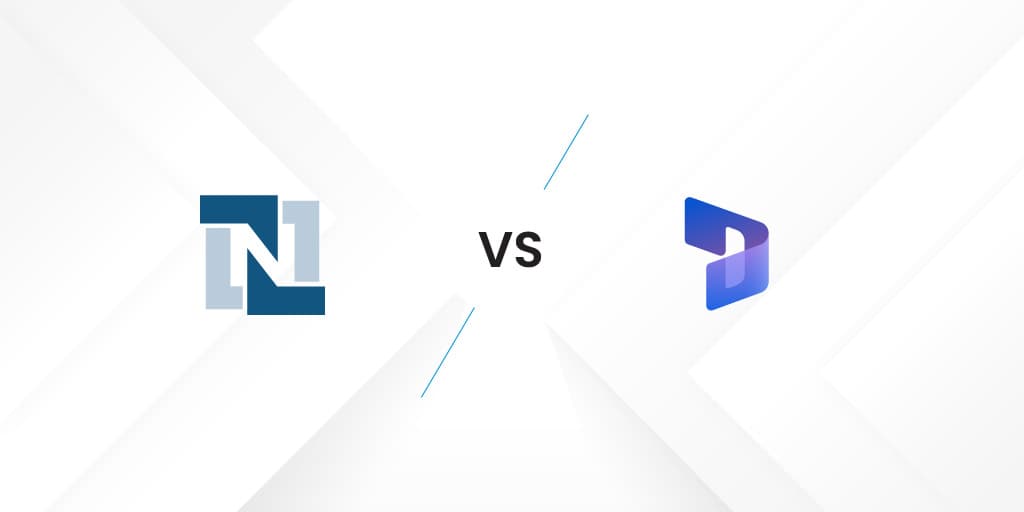As the global Enterprise Resource Planning (ERP) software market is expected to reach $41.69 billion by 2021, the growth potential of businesses is skyrocketing. With more than a handful of ERPs in the market, choosing the best ERP system is crucial in ensuring business success. NetSuite and Microsoft Dynamics 365 are two of the leading ERPs in the market, so let’s compare their features and advantages to determine which system is the right fit for your business.
NetSuite and Dynamics 365 Finance & Operations – In a Nutshell
Both NetSuite and Dynamics 365 Finance & Operations (F&O) are built as sophisticated business management programs, making them reliable for companies to run their financial and organizational processes.
NetSuite is a leading and trusted cloud-based ERP software for businesses of all sizes. It also offers efficient business intelligence applications from the legacy of Oracle.
NetSuite ERP consists of seven individual modules:
- Financial Management
- Order Management
- Production Management
- Supply Chain Management
- Warehouse and Fulfillment
- Procurement
- Human Resources Management (HCM)
On the other hand, Microsoft Dynamics 365 F&O, now known as Microsoft Dynamics 365 Finance, is an ERP solution that unifies the various aspects of business processes and operations in a single package. Dynamics 365 combines CRM tools and ERP capabilities in a single platform while maintaining flexibility.
Essential features of Microsoft Dynamics 365 F&O include:
- Financial management
- Accounting
- Budgeting
- Planning
- Tax management
- Manufacturing
- Supply chain management
- Time & expense management
- Project estimation & management
- Support
Dynamics 365 F&O helps medium-sized businesses work smarter with connected operations, provide exceptional customer experiences, and get real-time information on any device, anywhere, at any time.

NetSuite vs. Dynamics 365 Finance & Operations – Pros and Cons
Pros of NetSuite ERP
- Interface, menu bars, and forms are easily customizable
- The order fulfillment process is straightforward and can be integrated directly with distributors such as FedEx or UPS
- NetSuite’s financial management features are some of the best in the ERP market
Cons of NetSuite ERP
- NetSuite’s interface is dated and can be challenging to navigate
- Lengthy deployment processes that require extensive customization
- Building reports are complicated and cumbersome
- Difficult to turn off specific native reports for certain users
- Saved search fields are not always available
Pros of Dynamics 365 F&O
- Includes robust business intelligence capabilities through Microsoft’s Power BI tool.
- Consists of Machine Learning and Artificial Intelligence, which can be used with a digital assistant
- Dynamics 365 is tightly integrated with Microsoft’s other productivity products.
Cons of Dynamics 365 F&O
- Due to the vast amount of data, a few users have found it slow when running reports.
- Organizations may find the customization process difficult when using in-house teams.
NetSuite or Dynamics 365 Finance & Operations ERP?
We could make countless comparisons between products and features with all the available systems. However, NetSuite and Dynamics 365 F&O appeal to many mid-market and enterprise-level companies looking for flexible Software as a Service (SaaS) and cloud solutions.
Comparing NetSuite to Microsoft Dynamics 365, it is clear that Dynamics 365 F&O has a competitive edge over NetSuite in the following areas:
Dynamics 365 F&O has a familiar interface with built-in setup wizards and preconfigured templates to enable quicker adoption and reduce training costs. In addition, unlike NetSuite, the availability of Dynamics 365 F&O’s deep integration with Office 365 helps enhance productivity and usability.
Dynamics 365 F&O has a built-in analytics mechanism that provides a quantitative view of your operations, business, and the market, enabling you to make better decisions.
Dynamics 365 F&O is single-tenant software with substantial advantages over systems like NetSuite. Its security architecture is easy to customize to fit your business’s requirements.
NetSuite imposes a one-size-fits-all configuration system that may or may not be best for your situation. However, Dynamics 365 allows each user to tailor the solution layout to their business requirements.
Dynamics 365 F&O pricing is more straightforward than NetSuite. Dynamics 365 F&O comes with license-based pricing that is predictable, user-based, and billed monthly. In comparison, NetSuite ERP service contracts remain inflexible. A 5-year TCO for Dynamics 365 is significantly lower than NetSuite.
Microsoft’s top solution, the Dynamics 365 suite, is offered as a complete stack. Therefore, Dynamics 365 includes infrastructure, platforms, and applications – with Azure, Dynamics 365, and Office 365.
Still Deciding Between NetSuite and Dynamics 365 Finance & Operations as Your Next ERP Software?
If you are still not convinced about which ERP to choose between NetSuite and Dynamics 365 F&O, or if you would like to explore more about Dynamics 365, connect with one of our representatives!
LevelShift will analyze your business needs and determine the best ERP solution to help you accelerate business growth and attain outstanding results.







